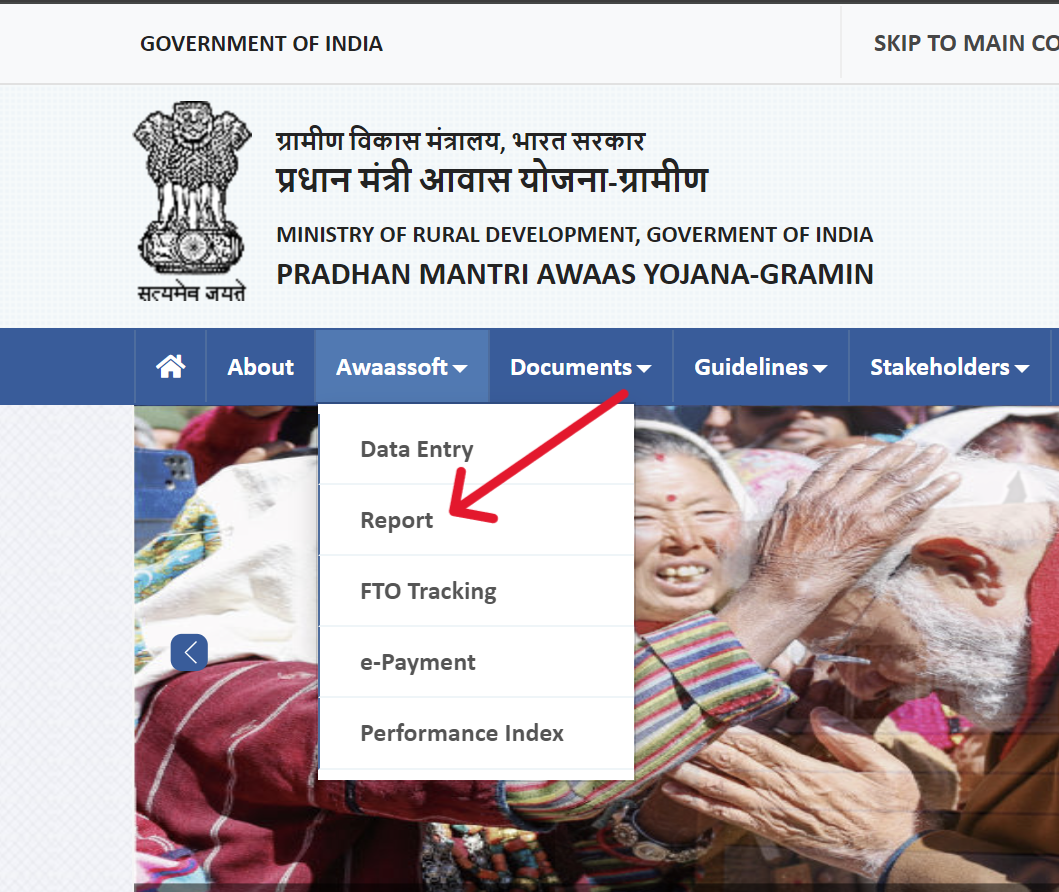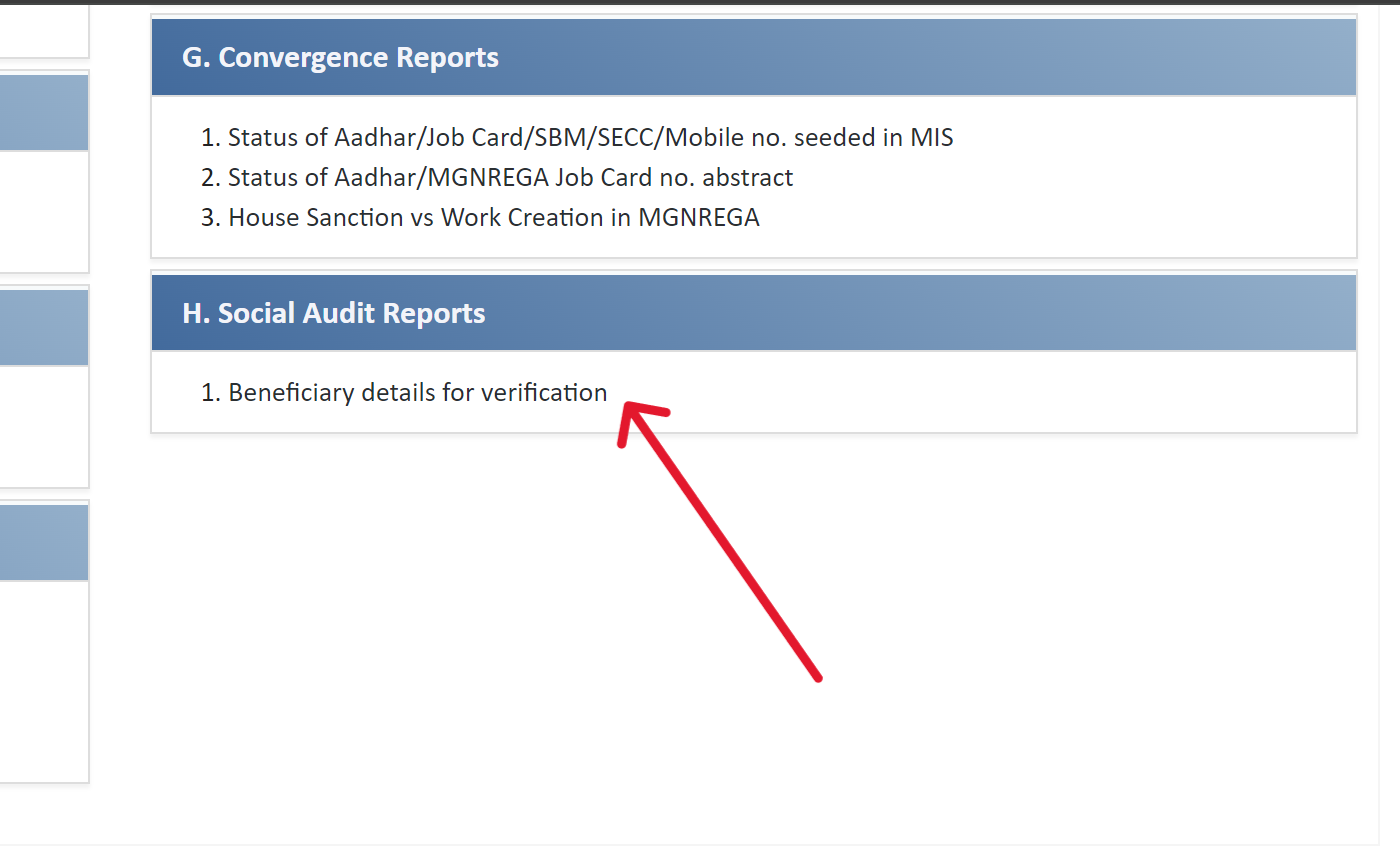PMAY-G Beneficiary List in MP
ADVERTISEMENT
The PM Awas Yojana Gramin (PMAY-G) provides funds to help rural families in Madhya Pradesh build affordable homes, aiming to improve life in villages and ensure safe living conditions.
In this article, we have explained how to check the PMAY-G Madhya Pradesh Beneficiary List.
Check PMAY-G Madhya Pradesh Beneficiary List
Follow these simple steps to check out the PM Awas Yojana MP Beneficiary List:
- Go to the Site: Visit pmayg.nic.in.
- Select 'Awaassoft': Click it, then 'Report' from the dropdown.

- Reach the Page: You'll land on rhreporting.nic.in.
- Find 'Beneficiary Details For Verification': Look under 'Social Audit Reports'.

- Enter Info: Choose Madhya Pradesh, then your district, block, and village.
- Click 'Submit': View the beneficiary list.

This streamlined guide helps you quickly find your name on the MP PMAY-G list.
💡
If your name isn't on the MP PMAY-G list, check your eligibility and application for errors. Contact local PMAY-G authorities for advice, and stay updated for any chance to reapply or correct details.
PMAY-G in Madhya Pradesh
Here are the key points and useful facts for Pradhan Mantri Awas Yojana - Gramin (PMAY-G) in Madhya Pradesh:
Key Points:
- Objective: The PMAY-G scheme aims to provide pucca houses with essential amenities to all houseless households and those living in kutcha or dilapidated houses in rural areas by 2024, ensuring “Housing for All.”
- Financial Assistance:
- The unit assistance provided is ₹1.20 lakh for plain areas and ₹1.30 lakh for hilly and difficult regions.
- The cost of construction is shared between the Central and State governments in a 60:40 ratio.
- Beneficiary Selection: Beneficiaries are identified using housing deprivation data from the Socio-Economic Caste Census (SECC) 2011 and verified by the Gram Sabha for accuracy and transparency.
- Monitoring and Implementation: The scheme employs digital platforms like AwaasSoft and AwaasApp to manage beneficiary data and monitor house construction progress. Payments to beneficiaries are processed through Direct Benefit Transfers (DBT) to ensure transparency.
- Convergence with Other Schemes: The scheme integrates with other welfare programs like Swachh Bharat Mission for sanitation, MGNREGS for labor, and the Jal Jeevan Mission for water supply, ensuring comprehensive support to beneficiaries.
- Special Projects: Up to 5% of the scheme’s resources are allocated for special projects, including disaster rehabilitation, settlement of conflict-affected families, and providing housing for marginalized communities.
- Skill Development: To improve the quality of construction, the scheme includes Rural Mason Training programs to certify skilled labor in rural areas, ensuring that houses are constructed with local materials and disaster-resistant designs.
Useful Facts:
- Phase-wise Implementation: The first phase targeted the construction of 1 crore houses between 2016-2019, and the remaining houses are expected to be completed by March 2024, as part of the larger goal of 2.95 crore houses nationwide.
- Increased House Size: The minimum house size under PMAY-G has been increased to 25 square meters, including a dedicated space for cooking, an improvement from previous housing schemes.
- Madhya Pradesh's Focus: In Madhya Pradesh, the scheme emphasizes the use of locally sourced materials and construction methods suited to the region’s specific needs, aligning with the broader national focus on sustainable and disaster-resistant housing.
These points summarize the key aspects of the PMAY-G scheme in Madhya Pradesh, highlighting financial support, convergence with other programs, and an emphasis on quality construction and transparency.